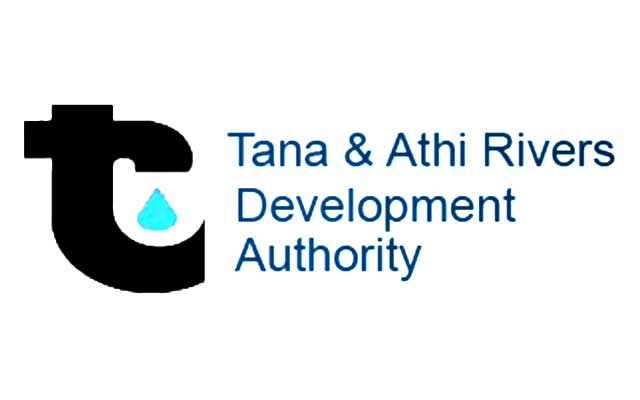Blue economy - caged fish farming
Project description:
TARDA is planning to introduce cage fish farming at Kiambere and Masinga reservoirs. This is to bridge fish demand in Kenya which currently stands at 800,000tons. Cage fish culture is an aquaculture production system where fish are held in floating net pens. The system utilizes existing water resources by enclosing the fish in a cage or basket which allows water to pass freely between the fish and the pond permitting water exchange and waste removal into the surrounding water.
The system can be used to culture several types of fish both in fresh and marine waters ecosystems. In Kenya, caged fish is currently being carried out in a small scale at Ong’ukwa Beach of Lake Victoria, Homa Bay County.
Project Objectives:
To sustainably utilize Masinga Dam water resources to bridge the national annual fish gap of 800,000tons in Kenya through Caged Fish Farming technology. The project aims to:
- Promote and enhance tilapia and catfish production using fish cage technology at Kiambere and Masinga multipurpose reservoir.
- Supplement supply of fish in the country.
- Demonstrate new dam-based fish farming methods.
- Improve local capacity to manage and develop the fishery/aquaculture sector.
Project Purpose:
TARDA intends to introduce caged fish farming in its reservoirs in a bid to bridge the national fish demand through the use of new fish technology to supplement Government’s effort in ensuring food security, job creation and employment for the youth.
Project Benefits:
- To yield 300 tons of fish per year per acre of water mass
- To save on forex from government imports on fish
- Fish as source of proteins – source of nutrition
- Industrial expansion
- Biodiversity conservation
- Creation of employment
- Raw materials to support livestock feeds
- Technology transfer on fish production
- Revenue generation
Project challenges:
- Initial Capital investment in cage setup, stocking of fingerlings and inputs required
- Mortality Rate with 70% of fingerlings introduced being the recovery rate, then 30% becomes the mortality rate
- Pollution, Theft, Predation, Storm, lightning, tidal wave, collision, structural failure of Equipment ,Freezing/super cooling and De- oxygenation of water are a risk to caged fish farming.
- Others includes changes in water including; salinity, Disease, Drought, fire, explosion, earthquake, mechanical breakdown or electrical breakdown at onshore farms.

| NO | Acreage | m3 | No of Cages |
| 1 | 1 | 4608 | 96 |
| 2 | 3 | 13,824 | 288 |
Cost element: – The cages are built with a two meter separation between them to allow easy access to each cage. The cost of one cage is Kshs 250,000 which translates to Kshs. 72 million to buy cages for the three acres of water mass.
The project will be implemented in phases starting with the first acre in year 1 estimated at a cost of Kshs. 15million
Notes
- The importance of the proposed Masinga dam Reservoir caged fish farming is that it will contribute to the national blue Economy and also in the national development and realization of vision 2030.
- TARDA will be a key player in bridging the national gap of fish supply in the market by increasing the acreage under fish production at Masinga and Kiambere Dams reservoirs

